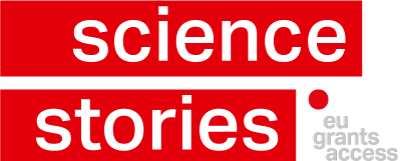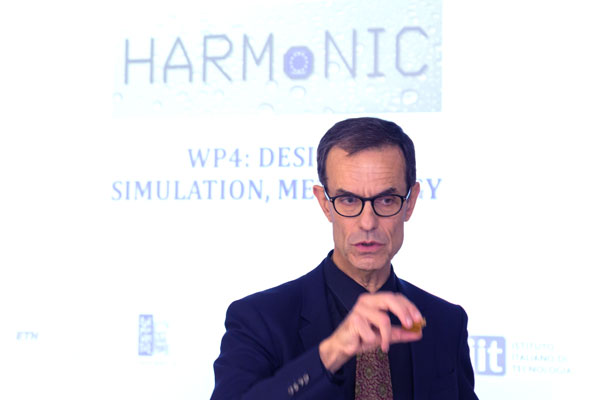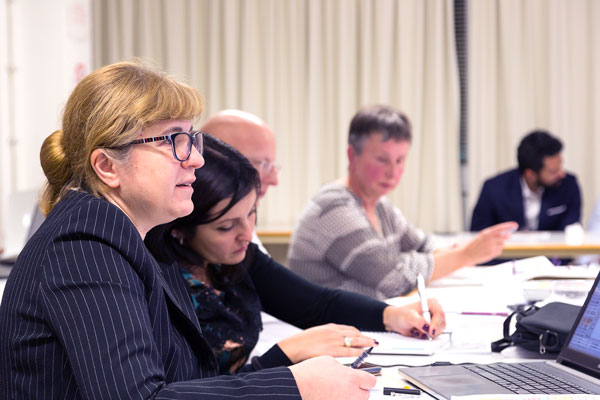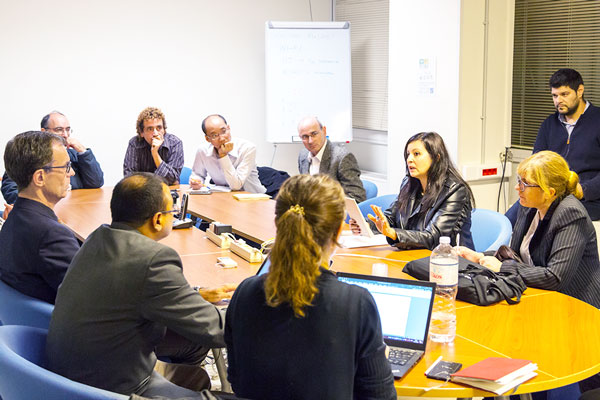
Decision in Athens
How an international research team lead by ETH Professor Dimos Poulikakos develops novel technologies related to water utilisation and harvesting by means of EU funds and how the EU controls the researchers’ work. A reportage.
The 25 researchers of the HARMoNIC consortium feel as though they are about to take an exam, as they are taking their seats on this sunny November morning in a seminar room inside the National Center for Scientific Research (NCSR Demokritos) northeast of Athens. About two years have passed since they came together on the initiative of Dimos Poulikakos, Professor of Thermodynamics at ETH Zurich, to propose a project to the European Commission and its FET funding programme that intends to revolutionise previous technologies for the condensation of water. With their project, they concentrate on three areas: The first aims at remarkably enhancing the water-steam cycle in thermal power plants. The steam that powers the turbines to generate electricity shall immediately and in the most efficient way recondense to water, which, in turn, can again be converted into steam in a power cycle. The faster this condensation process takes place and the quicker the water drains off the condenser, the more energy-efficient the power plant works. The second area looks for ways to optimally obtain potable water from the air in dry regions with high humidity. Finally, the third area rethinks how commercial membranes used for the desalination of sea water can be improved significantly. The HARMoNIC Project, which includes researchers from the fields of thermodynamics, materials science, surface technology and nanotechnology, convinced the European Commission for two reasons: On the one hand, there is its innovative, interdisciplinary approach. On the other hand, the project aims at two key global challenges: The continuously increasing demands for potable water and electricity. In February 2018, the European Commission approved the HARMoNIC Project and granted a budget of three million euros for the duration of three years. The consortium started its work in October 2018.
Critical questions …
Now, a year later, project leader Dimos Poulikakos and researchers of the HARMoNIC consortium come together in Athens with representatives of the European Commission for the formal review procedure which, according to EU regulations, takes place once or twice during the course of a project, lasts one day and is conducted in the form of an academic hearing. Project leader and members of the project team present the results of their research to date to the EU Project Officer in charge and a group of independent external experts; they report on whether and how they have achieved the defined goals and describe the prospects of their next work stages. The experts and the EU Project Officer discuss the results with the researchers of the consortium, ask questions and demand clarifications. At the end of the hearing, the experts issue their assessment und their recommendations; they will send a written report thereof to the EU at a later stage. With their report, they basically give the go-ahead for the project to enter the next phase.
It is therefore no wonder that the researchers of the HARMoNIC consortium are a bit nervous on this November morning, seated in a seminar room of the NCSR Demokritos in Athens, as Adela Nicolaie, the EU Project Officer responsible for HARMoNIC, introduces the three experts: Philippe Ben-Abdalla, Research Director at the French National Centre for Scientific Research (CNRS) in Paris, Adele Brunetti, Researcher at the Institute on Membrane Technology of the University of Calabria, and Shirley Yvonne Ruth Pugh of SPMJ Technology Consulting Ltd. They are the critical professional audience in front of which the researchers will present in the following hours and in great detail just what they have achieved during the past twelve months. The HARMoNIC consortium consists of the two universities ETH Zurich and University College London, the Max Planck Institute for Polymer Research in Mainz, the Smart Materials Group of the IIT Central Research Labs Genova and the Institute of Nanoscience and Nanotechnology of the National Center for Scientific Research NCSR in Athens. Each of these institutions specialises in material technologies that play a key role in the HARMoNIC Project.
… convincing answers
The condensers for the power plants as well as for water harvesting shall be designed in such a way that no water film develops during condensation but instant drops of water instead, that roll off and drain as quickly as possible, leaving the surface free for the generation of more droplets. The leaf of the lotus shows how nature deals with the issue. Its surface has a microstructure which forces the water to form droplets and roll away. Apart from hydrophobic qualities, the materials of which the condensers are made of must also have appropriate thermal properties such as high thermal conductivity. Inspired by the leaf of the lotus, the researchers created surface profiles demonstrating a sophisticated superposition of micro- and nanostructures that thus have a hydrophobic effect. Depending on the area of application, plastics or metals such as aluminium, copper or steel are most suitable as carrier materials for these structures. The crucial key is to find the optimal structure for the specific purpose und to develop the appropriate manufacturing technology to give the material the desired structure. To find suitable materials and structures, to produce them experimentally und to characterise them was the milestone the HARMoNIC consortium targeted to achieve during the first project year and the results thereof it presents to the experts today. The researchers introduce about 20 new materials, structures and process technologies during the hearing, which is only paused for a short lunch break. I use it to ask Dimos Poulikakos what he expects of the project in terms of concrete results and how they will be implemented. «We will have samples of novel materials proven in the laboratory, which will be up to ten times as efficient as the ones we have today,» he replies. «And towards the end of the project we will collaborate with the industry and initiate steps towards application by means of pilot projects.»
Good grades and recommendations
The review meeting lasts until half past seven in the evening until all objections and questions are clarified and EU Project Officer Adela Nicolaie and the three experts withdraw for a short consultation. Then they present their conclusions and recommendations to the somewhat exhausted researchers. They are impressed by the high quality of the research results and the achievements of the HARMoNIC team and suggest two things for the continuation of their work: On the one hand, they recommend drawing up a shortlist from the wealth of materials available and concentrating on the ones that the researchers deem most promising. On the other hand, they advise defining performance figures with a view to application with which the researchers can compare the performance of the different materials. The members of the consortium and project leader Dimos Poulikakos are pleased. Although the written report of the experts will not be available for another two months – the HARMoNIC team is confident after this decisive day in Athens: The project will enter the next phase. The stars are already shining in the nights sky as researchers, experts and EU Project Officer leave the NCSR Demokritos campus and head back into town to their hotels.
Future and Emerging Technologies (FET)
The HARMoNIC Project is financed by the EU funding programme Future and Emerging Technologies (FET). By fostering novel ideas, the EU supports science and technology research exploring new foundations for radically new future technologies by challenging current paradigms and venturing into unknown areas. Early detection of promising new areas, developments and trends, along with attracting new and high-potential research and innovation players, are key factors.
Interview with Dimos Poulikakos (German)
Dimos Poulikakos
Dimos Poulikakos studied Mechanical Engineering at the National Technical University of Athens (NTUA) and at the University of Colorado in Boulder (USA), where he earned his PhD in Mechanical Engineering in 1983. Before joining ETH Zurich in 1996 as Professor of Thermodynamics, he was a Full Professor for Mechanical Engineering at the University of Illinois (USA). From 2005 to 2007, he served as the Vice-President for Research on ETH Zurich’s Executive Board. His current research activities include the areas of nanotechnology, thermodynamics and interfacial transport phenomena with a broad palette of applications.
Horizon2020 Projects
HARMoNIC: HierARchical Multiscale NanoInterfaces for enhanced Condensation processes
- Programme: Collaborative Project «FET-Open»
- Duration: 36 month, 5 partners
- Contribution for ETH Zurich: 1’081’971 €
INTICE: Pathways to Intrinsically Icephobic Surfaces
- Programme: ERC Advanced Grant
- Duration: 60 Monate
- Contribution for ETH Zurich: 2’498’043 €







